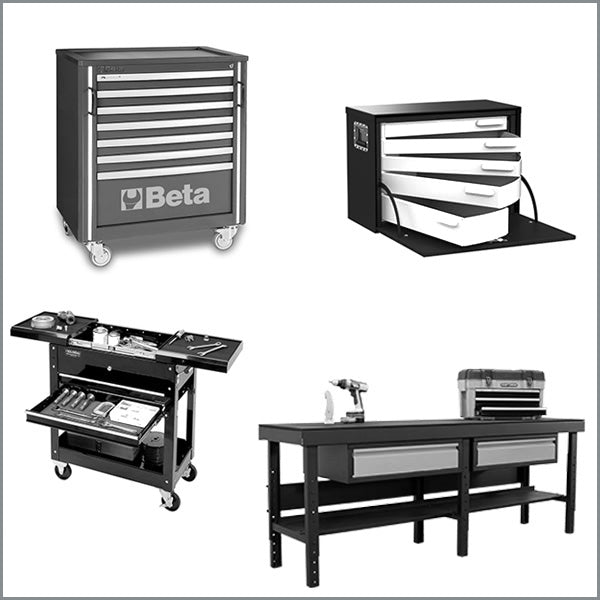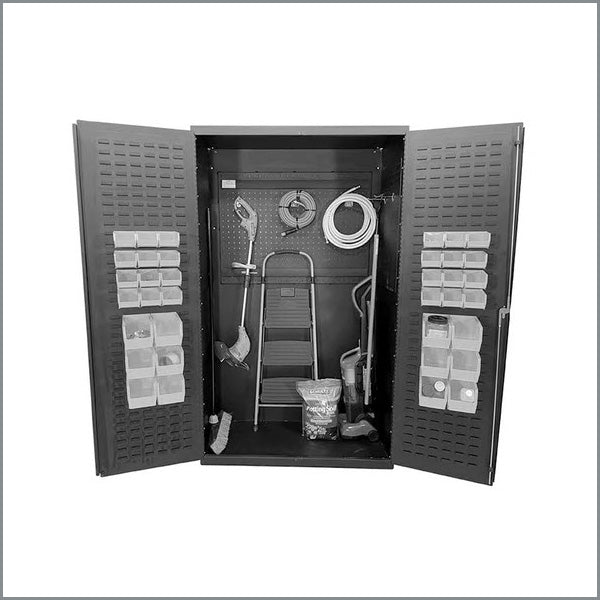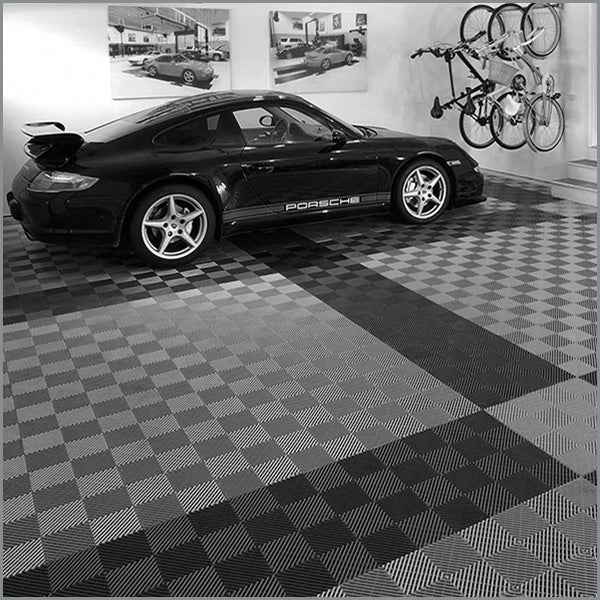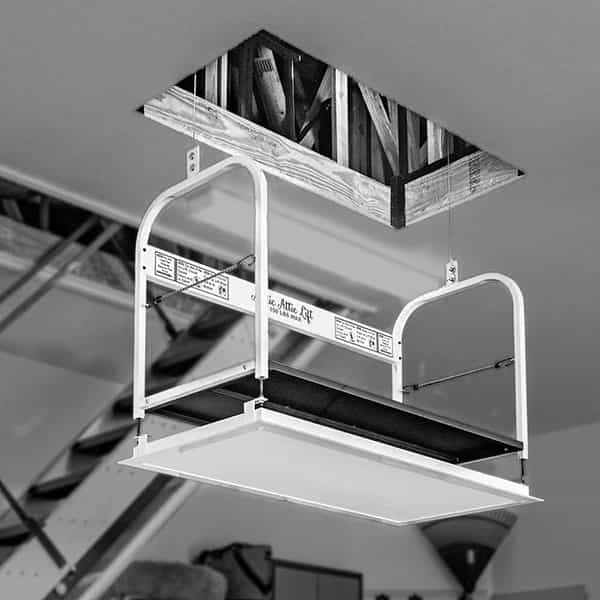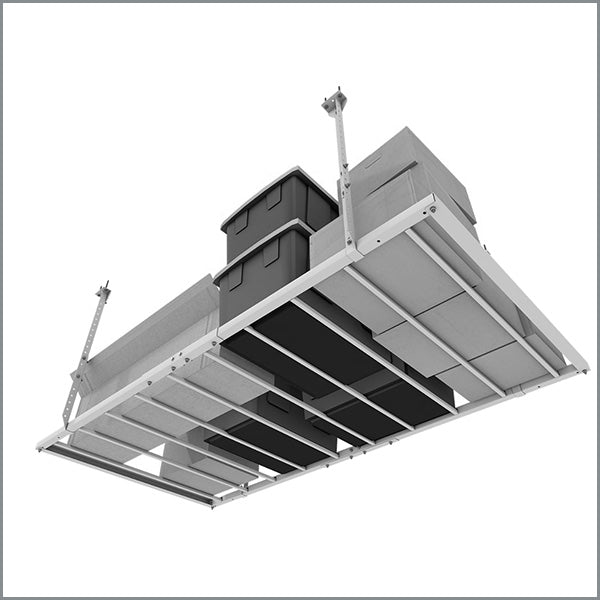Transform Your Attic Space: Smart Storage Ideas to Optimize Attic Storage
Ever thought about using that often-neglected attic space for storage? It could be the optimum solution to your clutter problems and finally bring order to your home. Many people have turned their attics into useful and economical storage areas, especially after installing a cargo lift and new or upgraded steps.
Key Takeaways
- Attic spaces are often underused, yet they can become valuable storage areas.
- Insulation and ventilation increase your comfort and protect your belongings.
- An organized attic can free up space in the rest of your home.
- Seasonal items and family mementos stay cleaner and more accessible in a tidy attic.
- An attic upgrade may add strong resale value and improve overall home appeal.
Before you start, there are a few important considerations to keep in mind:
🏗️ Structural Integrity
Ensure your attic floor can support the weight of stored items. Consult a professional if you're unsure about the load-bearing capacity.
🪜 Access
Install a sturdy, pull-down ladder or stairs for safe and easy access to your attic space.
🌡️ Insulation
Sufficient insulation can increase your comfort and protect your belongings from extreme temperatures and moisture.
💡 Lighting
Add adequate lighting to navigate the space safely and locate items easily. New LED fixtures are inexpensive, energy-efficient, and long-lasting.
🪵 Flooring
If your attic doesn't have proper flooring, consider installing plywood or OSB sheets to create a stable, walkable surface.
Why an Unused Attic Is a Goldmine for Storage
Turning that often ignored space above your living area into an attic for storage is a smart move. Many homes miss out on nearly half their storage potential by not using the attic. It can become a well-organized part of your home, giving you more space to live comfortably.
Making Room for Seasonal and Holiday Decorations
Many families struggle to find a good place for holiday decorations and seasonal items. Storing them in the attic keeps your living areas tidy. With labeled bins and shelves, you can easily find what you need for any season.
This makes decorating for holidays much quicker. You won't have to dig through clutter to find your favorite decorations.
| Key Stat | Statistic |
|---|---|
| Unused Attic Space in Homes | 60% of Households have available attic space |
| Potential Added Value | Up to 20% (If made into living space) |
| Storage Capacity Gain | 30-50% Increase |
Ensuring Proper Attic Insulation and Ventilation
Keeping your attic comfortable and dry starts with good insulation. In many places, adding insulation can cut energy costs by up to 30%. Feel for drafts in winter or hot spots in summer to find issues that could damage your stuff.
Good airflow is key to preventing moisture buildup and mold. In hot areas, poor air flow can raise attic temperatures by 20°F. This can harm wood and shorten the life of your belongings. Some people use solar attic fans to lower these risks and get tax credits. Proper venting will also prolong the life of your roof shingles.
Here are some important tips:
- Follow recommended R-values for your area, like R-30 to R-60 in many places.
- Seal air leaks around vents or chimneys to improve insulation.
- Make sure intake and exhaust vents work well for airflow.
A quick roof check can give you peace of mind and keep your attic ready for safe storage all year.
Space Planning, Joists, and Plywood Decking
Before you start, make a solid plan for your attic space. Each joist is intended to hold a certain amount of weight. So, it's key to check if they can handle more. If attic flooring is not already present, adding plywood or OSB sheets will incur additional dead load (about 2 pounds per square foot) but will simultaneously strengthen your structure.
Understanding Weight Distribution
Store heavy bins and other weighty items near load-bearing points (typically away from the center of the span). This lessens the floor's stress and prevents sagging. Spreading out items and checking spans often keep things balanced. Think of it as investing in your attic's stability for the long run.
Selecting Durable Materials
Choose high-grade plywood for your attic. It handles temperature changes and foot traffic well. Companies like Georgia-Pacific offer strong panels for 16-inch or 24-inch on-center joist or truss spacing. Opting for quality products means your storage area will last longer. It also ensures safer movement across the boards later on.
How to Convert Attic to Storage Efficiently
By turning your attic into storage, you free up space in your living areas. Simple steps like making sure the floor is safe and adding ventilation will make it a better place.
Most homeowners use their top floors for storage. Making your attic a storage area helps you move out-of-season items easily. Shelving can increase storage by 50%, and labels can cut down on search time by nearly 40%.
Organizing Unfinished Corners and Rafter Voids
Use corner shelves and small spots to make the most of every inch. Store out-of-season clothes in vacuum bags to save space. Keep similar items in clear plastic bins for easy finding.
Build custom shelves on beams or rafters. Use large labeled crates for delicate items. A small worktable in the center makes sorting and repacking easier without tripping over boxes.
Creating Zones for Items Stored in the Attic
Organize items by type for easier access. Set up a zone for holiday decorations, another for family treasures, and a third for big items. This method keeps your attic tidy and organized over time.
| Storage Tip | Key Benefit | Stat |
|---|---|---|
| Plastic Bins | Protect items from dust | 25% boost in efficiency |
| Labeling | Faster retrieval | 40% time saved |
| Shelving Systems | Use vertical space | Up to 50% increase |
Safety Measures Before You Convert Your Attic
Before you start, make sure your attic is safe. Check the beams for any sagging, cracking, rot, or damage. Weak spots can be a problem when you store heavy items.
Make sure you have a strong ladder or stairs. They need to hold your weight and the items you carry. If you're unsure, talk to a contractor for advice. Better yet, consider investing in high-quality attic lifts like the Versa Lift or SpaceLift. Having one will eliminate the need to struggle to carry your items up the steep attic steps.
Good lighting is key to safety. If your attic is dark, get an electrician to help. Clearing clutter can also prevent accidents.
Don't forget about ventilation. A dry attic reduces mold and keeps things fresh. This is great for storing items like seasonal decorations.
Safety Checklist
- Check support: Floors must handle weight from furniture and boxes.
- Install safeguards: Handrails for stable access, plus well-rated attic doors.
- Watch for hazards: Rodents, leaks, or exposed wiring.
Budgeting for Attic Improvements
Here's a quick look at what attic renovations might cost:
| Task | Cost Range |
|---|---|
| Installing or Upgrading Attic Steps | $750 – $1,500 |
| New Electrical Circuit (if Needed) | $250 – $500 |
| Plywood Floor Decking | $2/ft2 + Labor |
| Attic Cargo Elevator with Installation | $3,500 – $4,500 |
| Safety Railing for Steps | $350 – $500 |
Innovative Ways to Use Your Attic as Storage Space
Attics are full of hidden potential. Many homes struggle with over 60% of items disorganized. To make your attic useful, add features that look good and work well. This way, you can free up space and keep your home neat.
Utilizing Built-In Cabinets and Shelves
Custom features use vertical space well and keep things tidy. Shelves can make finding things 50% faster. Built-ins prevent clutter and hold bins for coats or sports equipment. Choose durable materials for lasting quality.
Keeping Track of Seasonal Items
Organizing your belongings can turn your attic into a valuable part of your home. Color-coded bins make finding holiday items easy. Clear labels on storage tubs help you find what you need quickly. Use your attic for all your seasonal needs, from camping in spring to decorations in winter.
Conclusion
Your attic can be more than just storage. With the right insulation, ventilation, and support, it can become a flexible space. Make sure the headroom meets the 7 to 8 feet rule for a good start. NOTE: Low headroom can prevent you from ever legally converting your attic into living space, but it won't stop you from using that free space for extra storage.
Organizing boxes and using shelving helps keep things tidy. This way, you can find what you need quickly.
An unfinished attic can be transformed with good flooring, lighting, and sealing. This improves your home's energy efficiency. Organizing decorations by season also helps keep things neat.
Planning well for your attic pays off in the long run. You can make it a spacious retreat or a neat storage area. Either way, it makes life easier and your home more versatile.
DIY Flooring Installation
Frequently Asked Questions
Q: How can I create a stable attic floor for storage?
A: To create a stable attic floor, first ensure your attic can support the additional weight. Install plywood or OSB boards over the joists, making sure not to compress any existing insulation. If needed, add extra support beams or consult a professional to ensure your attic can hold the weight of stored items safely.
Q: What are some practical attic storage solutions for an unfinished attic?
A: For an unfinished attic, consider installing adjustable shelving units, hanging rods for clothing, or using plastic storage bins. You can also create a plywood walkway for easy access to stored items. Remember to leave space for adequate ventilation and don't block any existing vents or attic fans.
Q: How do I convert my attic into a storage room without compromising insulation?
A: To convert your attic into a storage room while maintaining insulation, consider using raised flooring systems that allow insulation to remain undisturbed beneath. Alternatively, add insulation between the rafters and install a vapor barrier before laying down the flooring. You may also want to explore spray foam insulation for better coverage and energy efficiency.
Q: What's the best way to create more floor space in my attic for storage?
A: To maximize floor space in your attic, utilize vertical space with tall shelving units or custom-built storage solutions. Install hanging racks from the rafters for lighter items. If you have a truss roof, consider adding a floor between the bottom chords of the trusses to create a stable storage platform without compromising the structural integrity.
Q: How can I ensure proper attic ventilation when using it for storage?
A: Maintaining proper attic ventilation is crucial when using it for storage. Ensure that soffit vents and ridge vents are not blocked by stored items or insulation. Consider installing attic fans to improve air circulation. Keep a clear path for airflow and avoid storing items too close to the roof to prevent moisture buildup and maintain energy efficiency.
Q: What precautions should I take to protect stored items from pests in the attic?
A: To protect your stored items from pests, start by sealing any potential entry points around pipes, vents, and the attic access door. Use airtight plastic containers for storage instead of cardboard boxes. Consider placing cedar blocks or lavender sachets around the attic to deter moths and other insects. Regularly inspect the attic for signs of pest activity and address any issues promptly.
Q: How can I make the most of unused space in my attic for storage?
A: To maximize unused space in your attic, look for creative storage solutions. Install pull-down stairs or a ladder for easy access. Use the space between rafters for thin, slide-out storage units. Consider custom-built storage to fit awkward angles and corners. Don't forget about the space under the eaves – it's perfect for storing seasonal items or rarely-used belongings.
Q: What's the best way to organize and access everything stored in my attic?
A: To keep your attic organized and accessible, label all storage containers clearly and create an inventory list. Group similar items together and store frequently used items near the attic access point. Use clear plastic bins to easily see contents. Install good lighting and consider adding a small workspace for sorting and organizing. Regularly review and declutter your stored items to maintain an efficient storage system.


